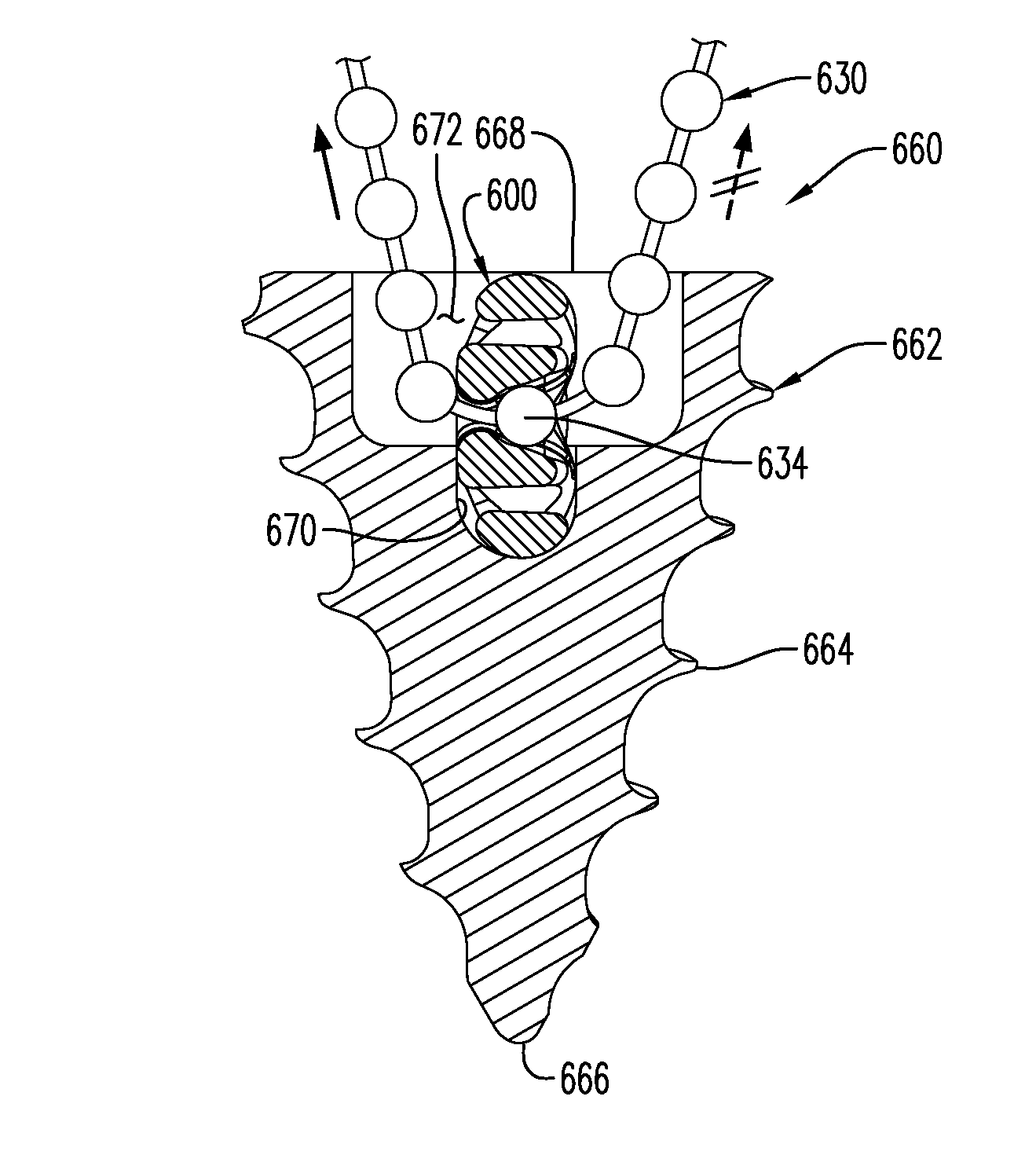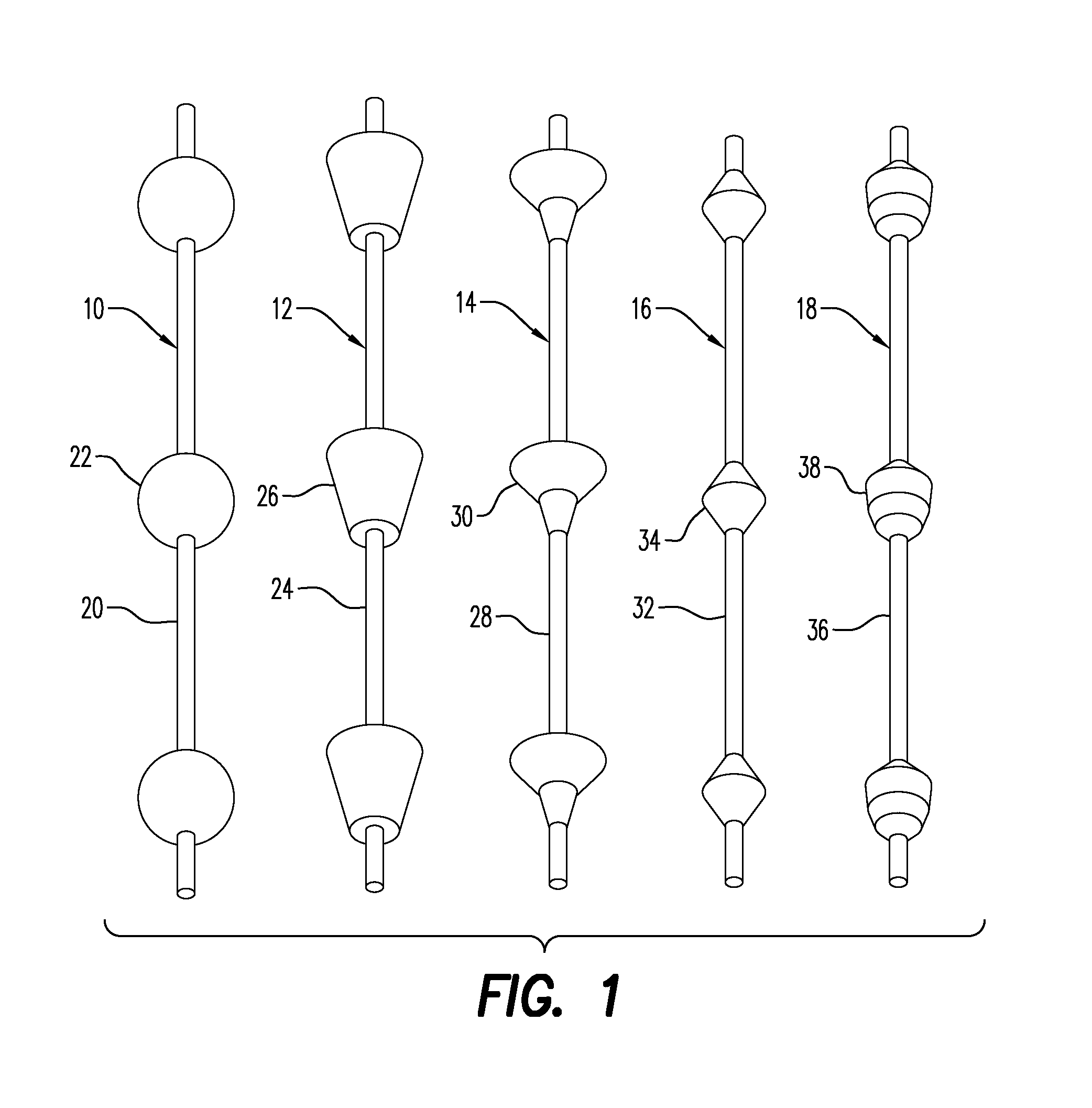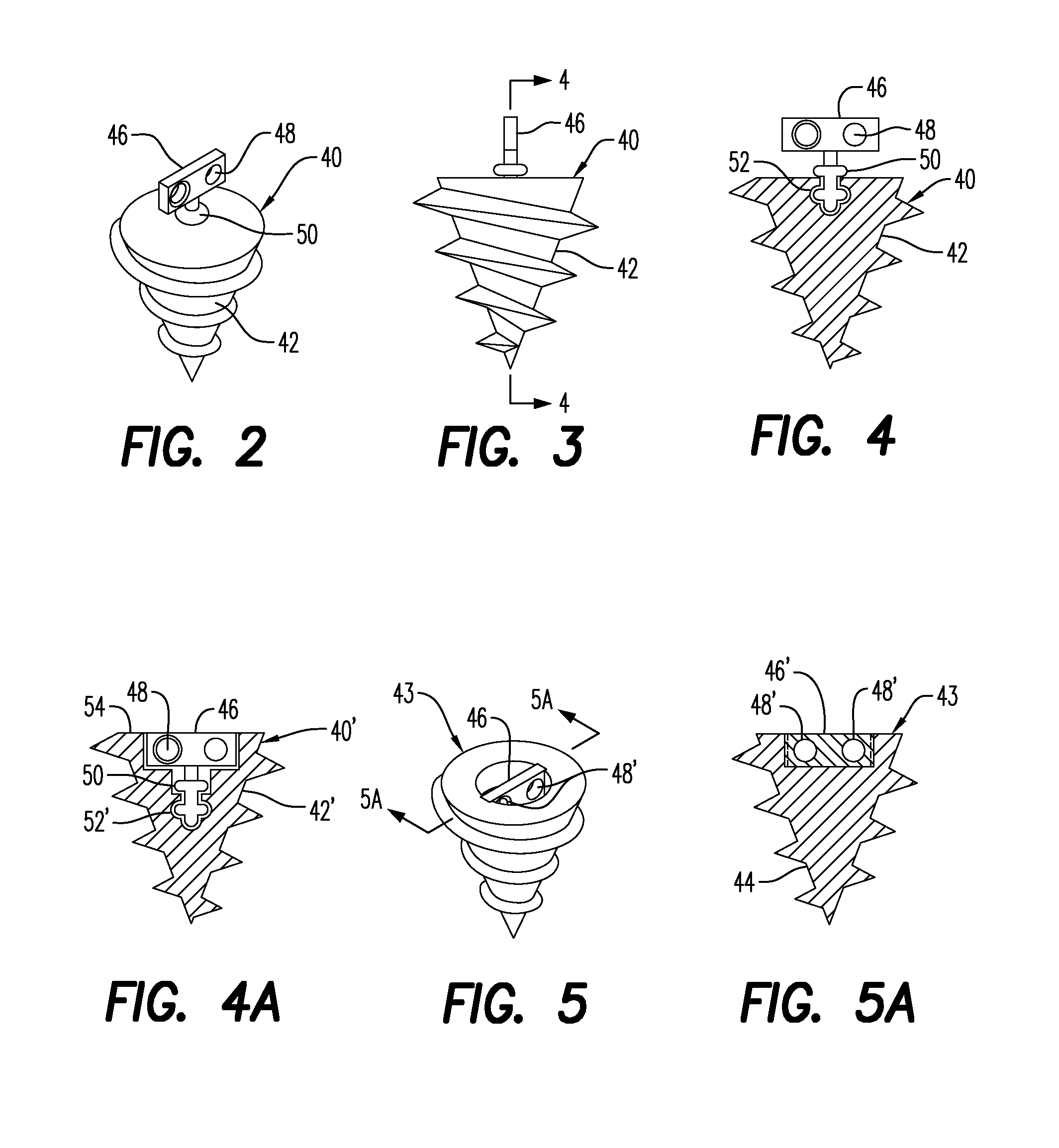Surgical suture system, tissue restraints, and tissue anchors
a surgical suture and anchorage technology, applied in the field of surgical suture systems, tissue restraints, and tissue anchorages, can solve the problem that the suture cannot travel through the locking aperture from the exit side to the entrance side without complete suture failur
- Summary
- Abstract
- Description
- Claims
- Application Information
AI Technical Summary
Benefits of technology
Problems solved by technology
Method used
Image
Examples
embodiment 67
[0503]In FIG. 7A, another suture tissue restraint is there shown generally at numeral 67 or 67′ and formed having a domed-shaped body similar to that shown in FIG. 7. However, in this embodiment 67 / 67′, two spaced apart suture locking apertures 58′ are formed through the dome portion of the tissue restraint 67 / 67′ in closely spaced relationship facing the tissue engaging side of this tissue restraint 67 so that a suture may be tensioned upwardly or away from the tissue contact surface. However, the bevels of the suture locking apertures 58′ may be oriented oppositely one another to form suture tissue restraint 67′ to lockingly engage a single suture for one directional movement only. Note that, if formed as shown without the missing portions, these suture tissue restraints may be snappingly engaged over a suture and they continue to function as above described.
[0504]Note that hereinbelow, tissue anchors and suture tissue restraints are sometimes collectively referred to as “tissue e...
embodiment 400
[0540]In FIGS. 65 and 66, an alternate embodiment to that shown in FIG. 59 is shown generally at numeral 400′ which includes substantially the same elements of embodiment 400 except for the addition of an elastic resilient O-ring 420 tightly fitted into an annular grove 422 formed inwardly into each of the solid segments 402′. The O-ring 420 has a relaxed diameter smaller than that of the annular grove 422 such that, when stretched into place within the annular grove 422, resistance to elastically stretching the diameter of the suture-locking aperture 404 is increased.
[0541]In FIGS. 67 to 73, two embodiments of a pie-shaped expandable suture tissue restraint are there shown at 430 and 430a. These embodiments, 430 and 430a, have a generally button or disk shaped body 432 and are preferably compatible with sutures having a spherical protuberance as described above and include a plurality of spaced apart rigid sectors 434 which are separated by very thin and thus resilient flat disk 43...
embodiment 580
[0546]Referring to FIGS. 83 and 84, another embodiment of the tissue anchor is there shown at numeral 580. This exemplary embodiment 580 includes a solid tapered spiral thread 582 having a distal tissue penetrating tip 584 and a tapered head 586 formed having an axially aligned driving socket 594 formed into the proximal end of the tissue anchor 580. This embodiment 580 utilizes the resilient protuberance concept previously described in FIGS. 77 to 82, wherein the suture passage 588 is arcuately configured for smooth passage of the resiliently collapsed protuberances 464′ as they are forced against the head deforming inlet surface 590 as the suture is pulled in the direction of the arrow. Reverse movement of the suture is prohibited by the interaction of surface 470 of the backside of each protuberance 464 against the head locking surface 492.
[0547]Referring now to the drawings, and firstly to FIGS. 85 to 90, the preferred embodiment of a tissue restraint / suture capture is there sho...
PUM
 Login to View More
Login to View More Abstract
Description
Claims
Application Information
 Login to View More
Login to View More - R&D
- Intellectual Property
- Life Sciences
- Materials
- Tech Scout
- Unparalleled Data Quality
- Higher Quality Content
- 60% Fewer Hallucinations
Browse by: Latest US Patents, China's latest patents, Technical Efficacy Thesaurus, Application Domain, Technology Topic, Popular Technical Reports.
© 2025 PatSnap. All rights reserved.Legal|Privacy policy|Modern Slavery Act Transparency Statement|Sitemap|About US| Contact US: help@patsnap.com



